Looking to cultivate your own green oasis but limited by space? Don’t worry, apartment gardening has more more potential today than ever!
With a little creativity, some expert tips, and some modern gardening essentials, you can transform your apartment into a thriving urban jungle. Prior to moving into our house, I resided in urban Toronto, where my cozy apartment allowed me to cultivate and enjoy a bountiful array of herbs and vegetables, enhancing my culinary journey.
In this article, we’ll delve into the world of apartment gardening, sharing essential tips and tricks to help you make the most of your limited space. From choosing the right plants to utilizing vertical gardening techniques, we’ll explore how to maximize your apartment’s potential for greenery.
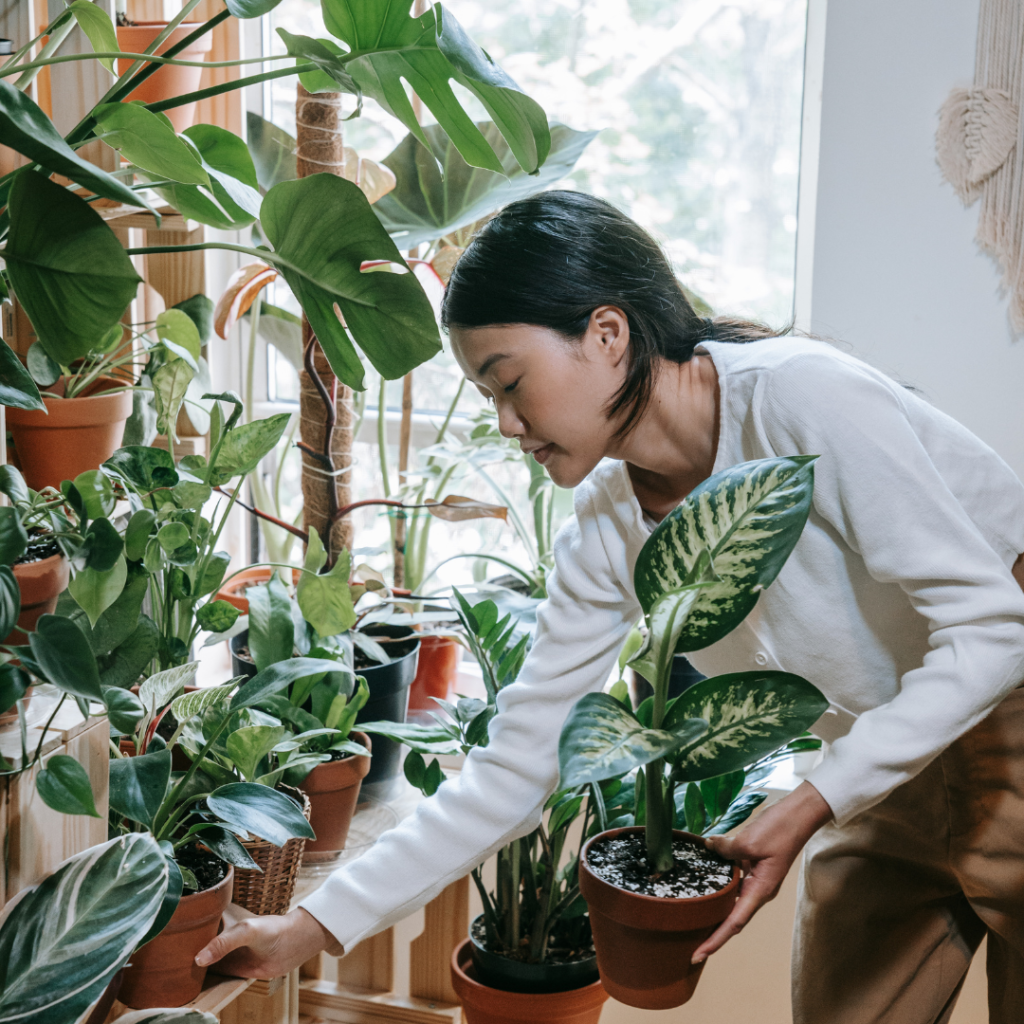
This post may contain affiliate links, which means that I may earn a small commission if you make a purchase using these links. This is of no cost to you and does not skew our recommendations. As an Amazon Associate, I earn from qualifying purchases.
The Benefits of Apartment Gardening
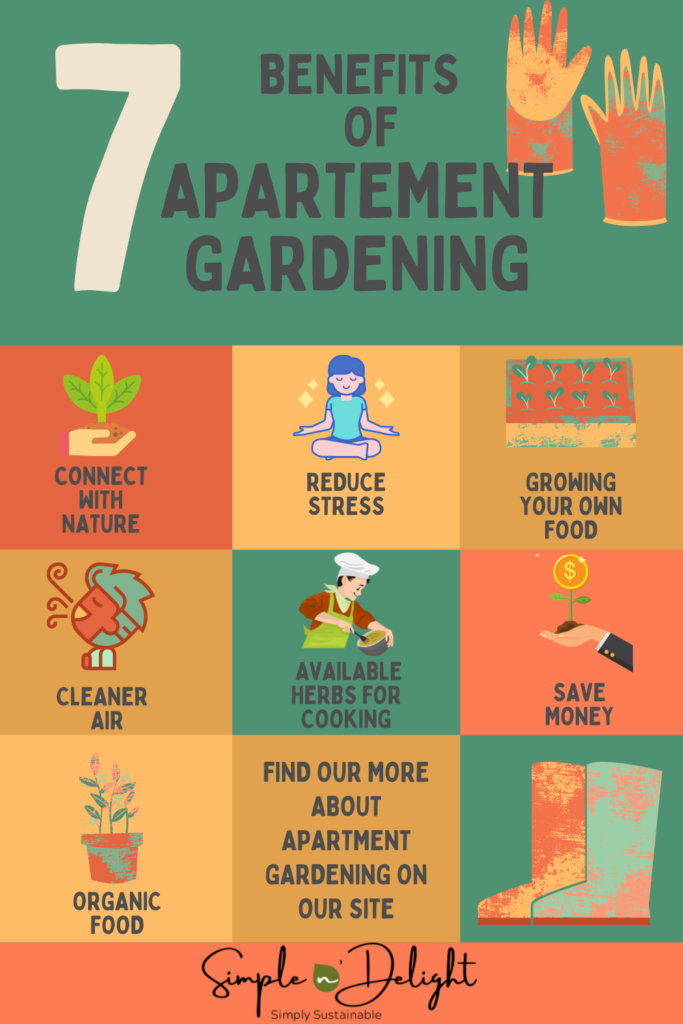
Apartment gardening offers numerous benefits that go beyond just adding a touch of green to your living space. First and foremost, it allows you to connect with nature and experience the joy of growing your own plants, no matter how small your apartment is.
Gardening has been proven to reduce stress, improve mental health, and provide a sense of accomplishment. Additionally, having plants indoors can help purify the air, improve indoor humidity, and even reduce noise levels. Apartment gardening brings nature closer to you, creating a serene and tranquil ambiance.
Another advantage of apartment gardening is the opportunity to grow your own herbs, vegetables, and fruits. Not only does this save you money on grocery bills, but it also ensures that you have access to fresh, organic produce right at your fingertips. Apartment gardening also promotes sustainability by reducing food miles and carbon emissions associated with transporting produce from conventional farms to your plate. It’s a win-win situation for both your wallet and the environment!
Choosing the Right Plants for Apartment Gardening
When it comes to apartment gardening, selecting the right plants is crucial for success. Since space is limited, it’s important to choose plants that are well-suited for indoor or small-scale growing. Here are a few factors to consider when selecting plants for your apartment garden:
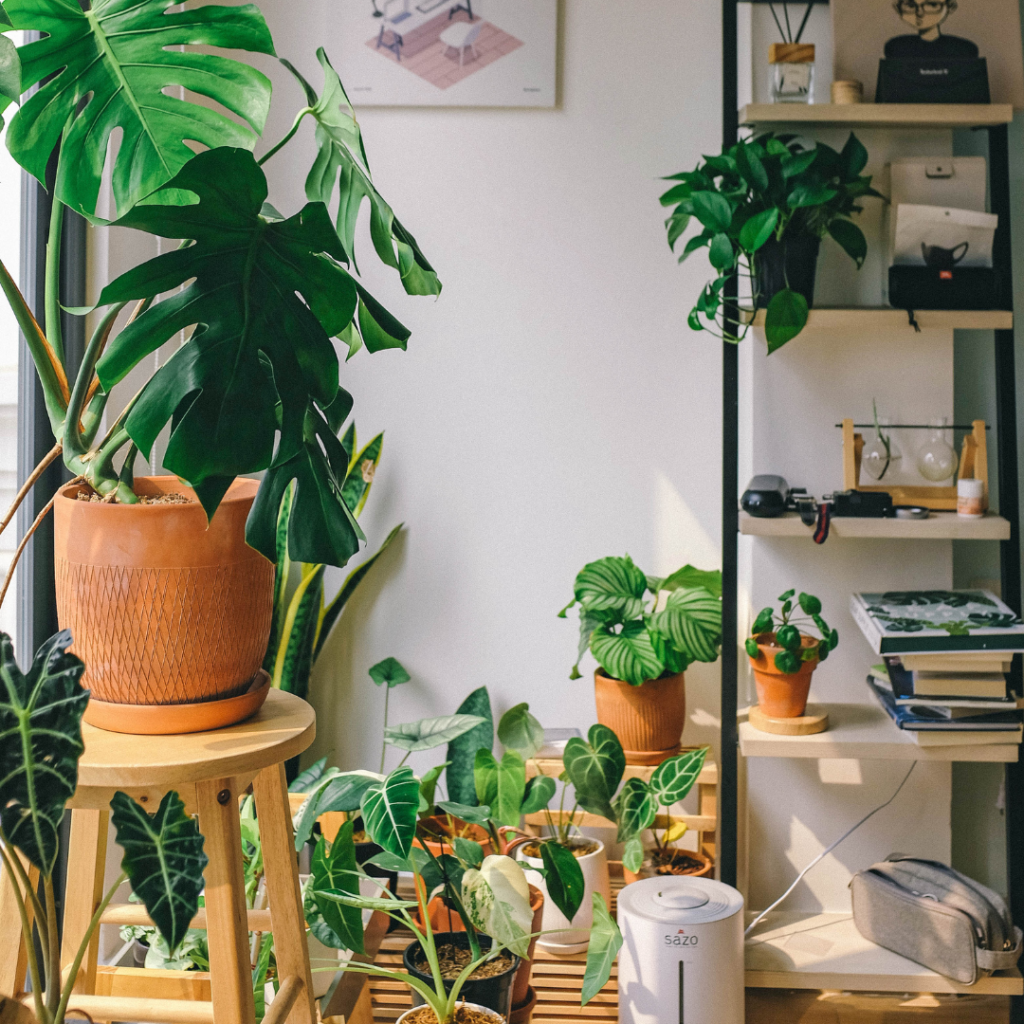
Apartment Gardening Light Requirements
Most plants require adequate sunlight to thrive, so it’s essential to assess the lighting conditions in your apartment. If you have a sunny balcony or windowsill, you can opt for sun-loving plants like herbs, succulents, or flowering plants. On the other hand, if your apartment receives limited sunlight, consider low-light plants such as snake plants, pothos, or peace lilies. These plants can tolerate lower light levels and are perfect for brightening up darker corners.
Apartment Gardening Space Requirements
Since space is at a premium in apartments, it’s important to choose plants that won’t outgrow their designated areas. Look for compact or dwarf varieties that are specifically bred for small spaces. These plants are often labeled as “patio” or “dwarf” varieties and are ideal for containers or hanging baskets. Some examples include cherry tomatoes, mini bell peppers, compact herbs like dwarf basil or thyme, and small flowering plants like miniature roses or African violets. By selecting plants that stay small, you can make the most of your limited space without sacrificing variety.
Apartment Gardening Maintenance Needs
Consider your lifestyle and the amount of time you can dedicate to plant care. Succulents, cacti, and air plants are great choices as they require minimal watering and can survive in dry environments. If you enjoy the ritual of plant care and have more time to spare, you can choose plants that require regular watering, pruning, or fertilizing. Assess your time commitment and select plants accordingly to ensure a successful and stress-free gardening experience.
Don’t be afraid to try different varieties and observe how they respond to your apartment’s microclimate.
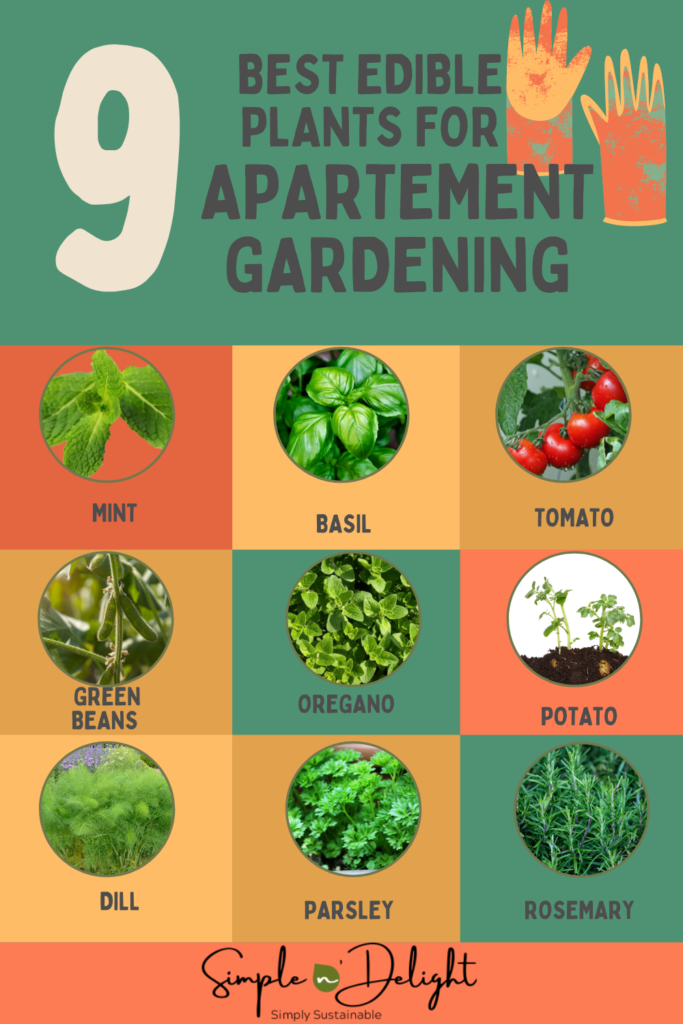
Some of the best edible plants and herbs for apartment gardening are smaller plants that require vertical growing rather than larger plants such as zucchini, requiring large spaces and sprawling areas. Plants for apartment gardening that I have had great success with are basil, tomatoes, mint, oregano, rosemary, potatoes (in large container such as recycling bins or fabric grow bags), dill, parsley and green beans.
Container Apartment Gardening Techniques
When apartment gardening for the first time it is important to choose lightweight and durable containers like self-watering pots or fabric grow bags. Self-watering pots have been a saviour for us, especially if you plan to vacation and be away from home. Fabric Grow bags can also provide you with a larger volume of soil to expand your planting.
Consider using hanging planters or railing planters for vertical space utilization if you’re short on space.
It is also important to use potting mix formulated for container gardening to ensure proper drainage and aeration, especially when you’re apartment gardening since this will give you an even greater chance of success. The plants will take up a good deal of window space, so make sure to incorporate plant stands or rolling carts for easy mobility, arrangement, and visual appeal.
Indoor Tips for Apartment Gardening
If your gardening is partially or totally indoors with limited light, you may need to invest in a quality LED grow light to supplement natural light for indoor plants. The LED system will give plants the nourishment they need while light is low.

I have found these simple clip lights to offer a good deal of light for my indoor plants. Alternatively if you have more than just a few plants and would like to grow over the winter, you could use a compact indoor greenhouse or terrarium to create a mini garden display.

If you want guarantee a constant supply of herbs and plants, consider a hydroponic gardening system for soil-free indoor plant cultivation. This method allows you the benefit of the cultivation without the mess of soil!

If you are growing tropical plants, it is a good idea to add a plant humidifier or pebble tray to increase indoor humidity for tropical plants.
Maximizing Natural Light for Apartment Gardening
Maximizing natural light in your apartment is essential for healthy plant growth. To achieve this, consider using reflective surfaces such as mirrors or metallic planters strategically placed to bounce light into darker corners.
Keep your windowsills clear and position your plants directly in sunlight to ensure they receive optimal exposure. Additionally, use plant stands or shelves to create varying heights, allowing all your plants to benefit from the available light. Don’t forget to regularly prune nearby overhanging trees or bushes that might obstruct sunlight from reaching your windows and plants.
By implementing these simple techniques, you can create an ideal environment for your apartment garden to flourish.
Watering and Fertilizing Your Apartment Garden
Different plants require different amounts of water. Using a self-watering planter can eliminate the guesswork in order to maintain consistent moisture levels. A soil moisture meter can gauge when plants need watering to prevent overwatering.

A liquid fertilizer with a balanced N-P-K ratio for healthy plant growth and flowering will help you to achieve fuller, more vibrant plants.

Make sure to stay within the recommended amounts of fertilizer to avoid burning the plants or try slow-release fertilizer pellets for long-lasting nutrient supply to potted plants.
Pest Control in Apartment Gardening
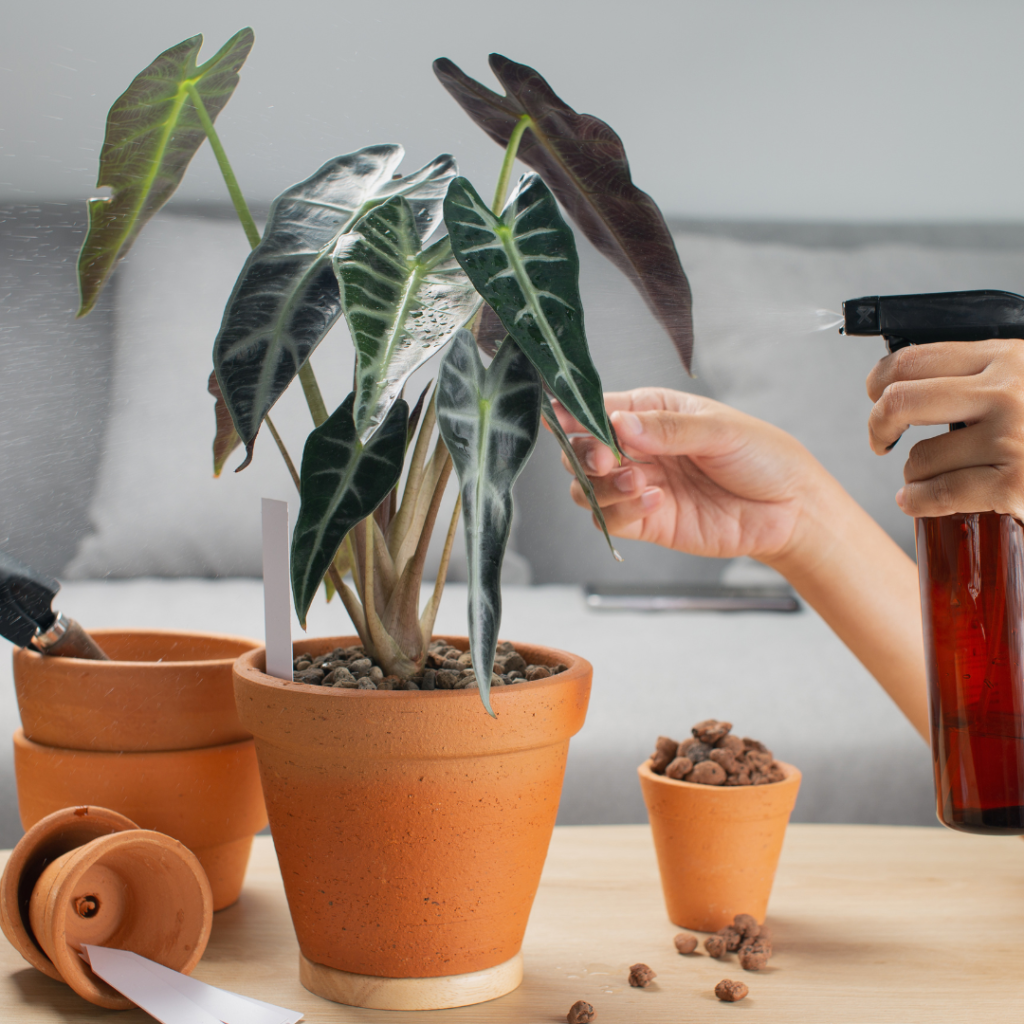
When I first began planting indoors I imagined that pests would not be a problem, unfortunately, I was mistaken and had to take certain measures into consideration. When it comes to managing pests in your apartment garden, opting for natural pest control methods is not only effective but also environmentally friendly.
Consider using neem oil or insecticidal soap, which are safe alternatives to chemical pesticides, to combat common pests. Utilize sticky traps strategically placed around your plants to catch and control flying insects like gnats and fruit flies.
Furthermore, fostering a friendly ecosystem, encourage beneficial insects such as ladybugs and lacewings, which naturally prey on pests, helping to maintain a balanced and healthy garden. Regularly inspect your plants for any early signs of pest infestations, like chewed leaves or discolorations, and promptly take appropriate action to prevent the problem from escalating.
By implementing these natural pest control measures, you can safeguard your apartment garden and promote a thriving, pest-free environment for your plants to flourish.
Harvesting and Enjoying Your Apartment Garden Produce
Harvesting the fruits of your apartment garden is a gratifying experience, and having the right tools can make it even more enjoyable. Invest in quality garden shears or pruning scissors to ensure precise and gentle harvesting, preventing damage to your plants.

As you gather your fresh produce, a garden harvest basket or tote will come in handy, keeping everything organized and easily transportable.
Embrace the culinary adventure of your homegrown harvest by exploring new recipes and cooking ideas. From vibrant salads to aromatic herb-infused dishes, savor the unique flavors of your apartment garden’s bounty, turning every meal into a delightful and rewarding experience. For recipes to try with your fresh produce, take a look at Kevin at Food Explora.
Conclusion: Maintaining a Sustainable Apartment Garden
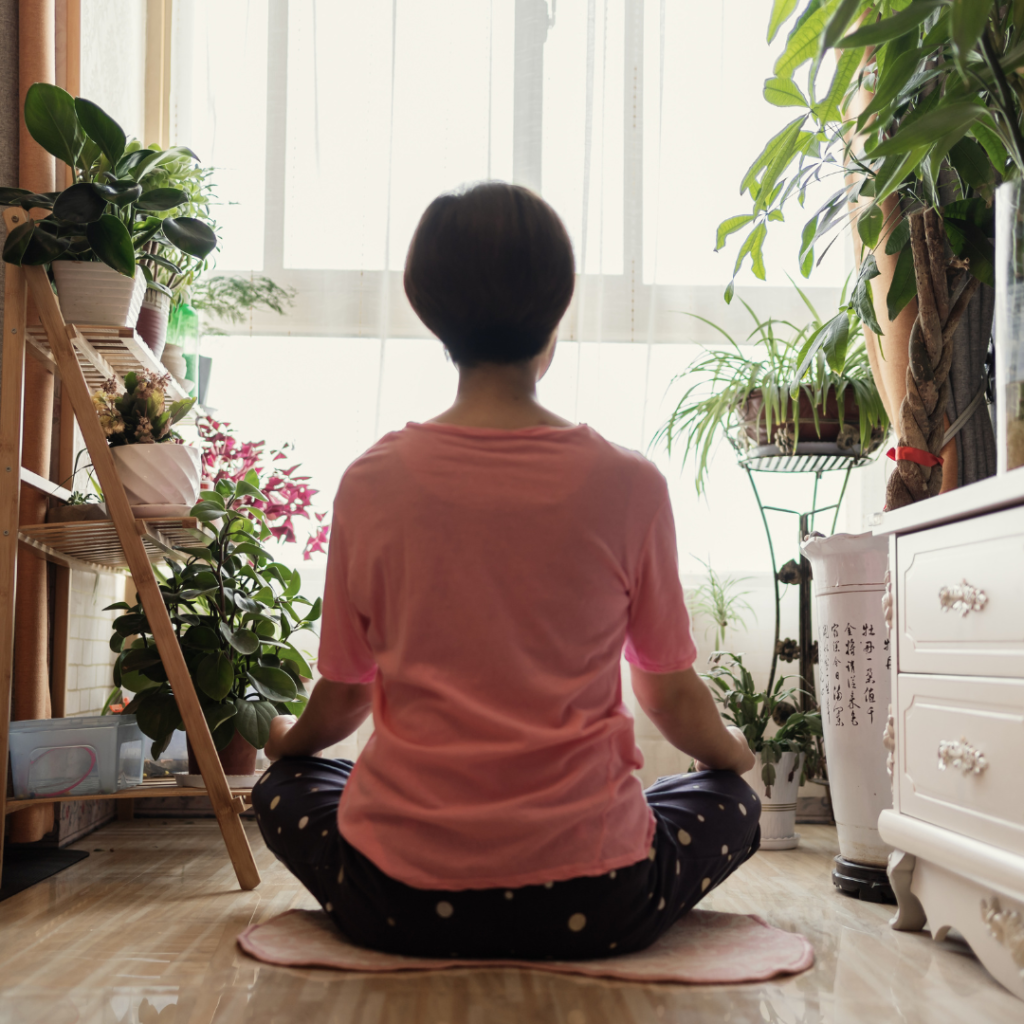
Maintaining a sustainable apartment garden is not only possible but also essential for creating a thriving and eco-friendly green space within the confines of your living space.
By incorporating sustainable practices, you can foster a harmonious relationship with nature and contribute positively to the environment. Composting with a compact compost bin allows you to recycle kitchen waste and enrich your soil naturally, reducing the need for synthetic fertilizers.
RELATED ARTICLE: Composting for Urban Living
With these sustainable principles at heart, your apartment garden can become a haven of green beauty, promoting a greener, healthier, and more sustainable future for all. Happy gardening!

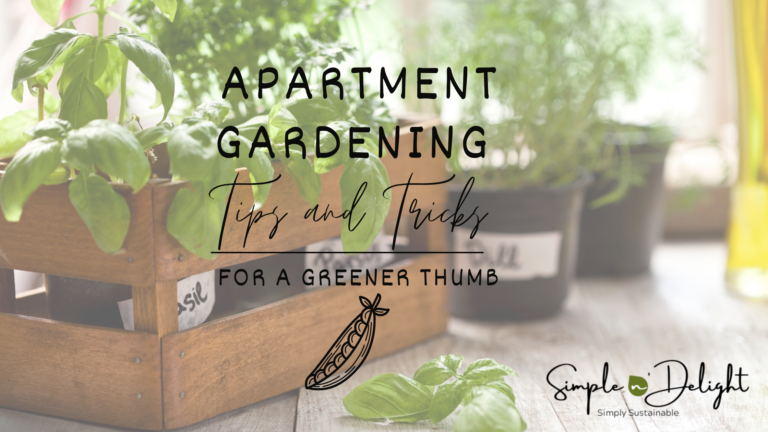









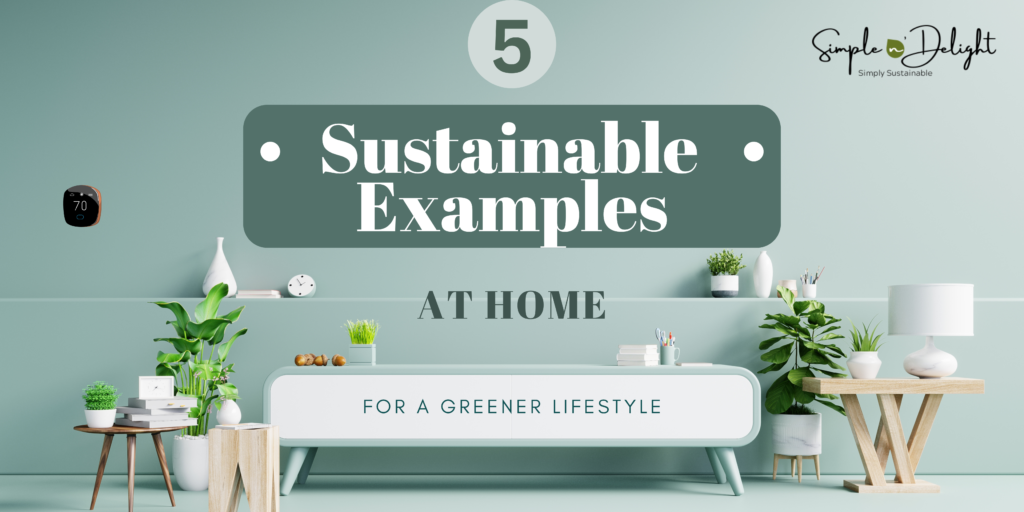


8 Responses
Awesome tips! Having plants around you makes such a difference!
Really good information! Now if only my cats would let me keep live plants!
Woow lóoks beautiful. Having plants around the compound,it creates a good conducive environment.
Thanks for sharing these wonderful gardening tips for small spaces. Loved it.
Awesome gardening tips for small spaces. Loved it.
I have a lot of houseplants and I’m very happy with the plant stand that I ordered for my dining area. I am going to look into some of those self watering planters.
I learned a lot from this post. I do not have a green thumb and have been discouraged but I would like to try again. You make things sound so simple. Thanks for the inspiration.
All of my indoor plans used to die but I am learning and getting better. My best find for living in an apartment was Aerogarden, the aquaponic system. I love them. I’m currently growing greens, jalapenos, tomatoes, and some herbs. Thanks for the tips!